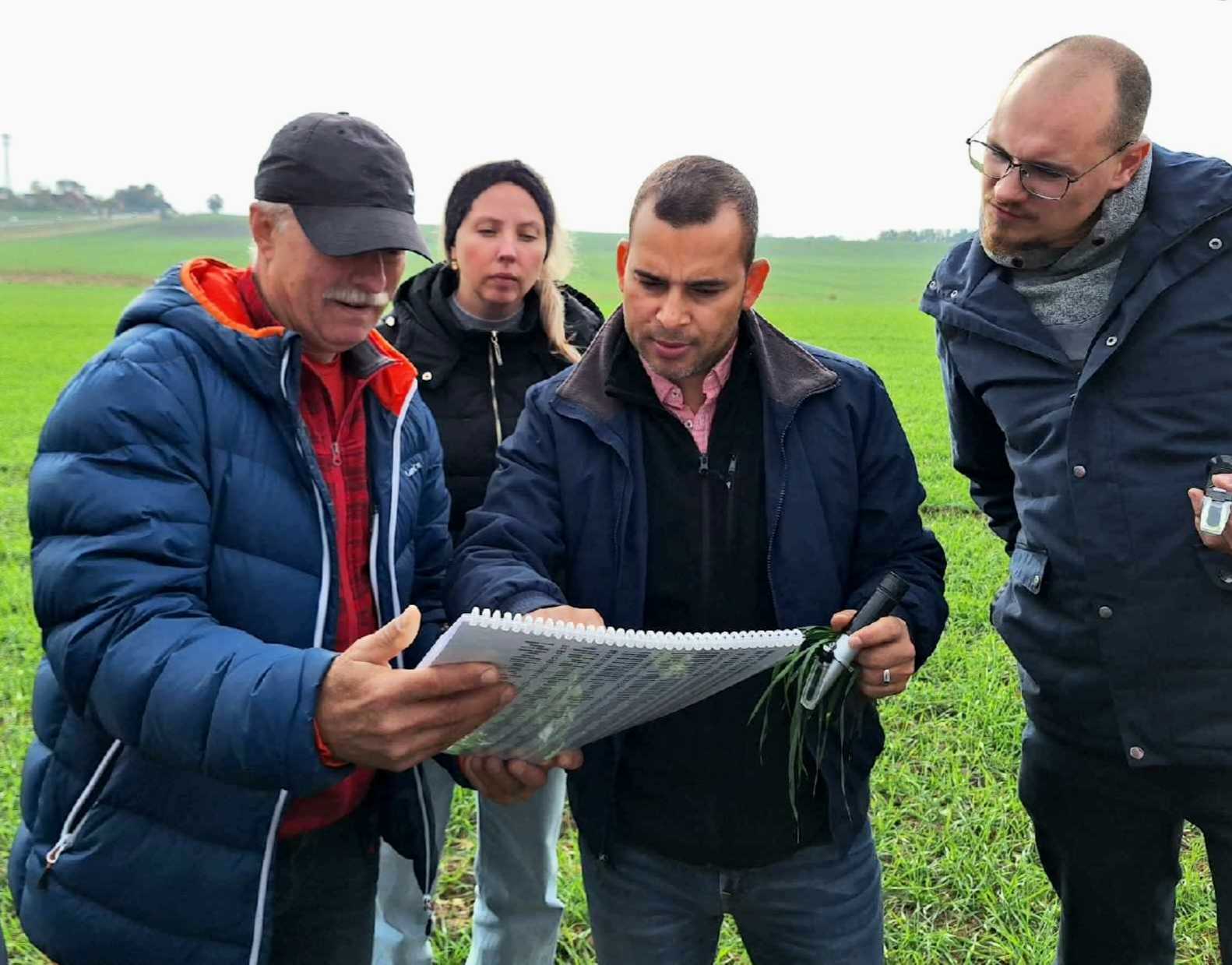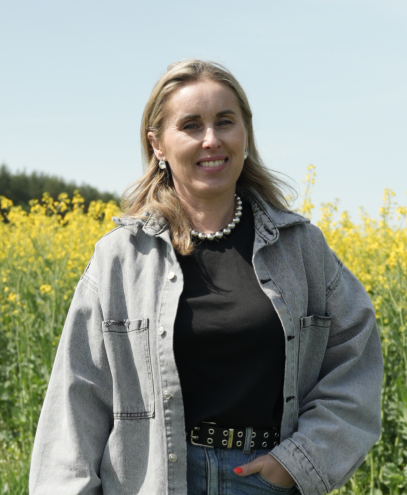Leverage agriculture in your path to net zero
Incorporate soil carbon removals into your climate goals
Offset hard-to-abate emissions while supporting the transition to regenerative agriculture
Our approach to regenerative agriculture provides access to high-quality carbon removals
Additionality
Dynamic baselines guarantee that only the carbon genuinely sequestered beyond standard business-as-usual scenarios is credited towards carbon removal efforts
High-integrity
Extensive on-farm soil sampling, combined with first-class science-based methodologies, offers conservative and factual carbon sequestration accounting
Third-party verification
Program’s methodology, figures, documentation and results are subject to a robust independent validation and verification audit
Permanence
Financial incentives, coupled with risk identification and mitigation mechanisms, alongside robust local governance structures, serve to minimise reversals
Monitoring
Combining field visits with satellite-enabled sensing to facilitate the traceability of implemented regenerative practices
Beyond Carbon
Healthy soils lead to positive impacts on interdependent ecosystem services and the achievement of the Sustainable Development Goals (SDGs)
Carbon sequestration through Regenerative Agriculture

Empowering European Farmers

Stakeholder Engagement
Our dedicated team of agronomists incorporate farmers' concerns, limitations and goals into a conjoint design and implementation of practices, ensuring long-term engagement and project permanence.
Empowerment through Knowledge
We offer continuous on-farm technical, science-driven support. Delivering insightful reports and metrics from soil sampling to address the needs of the soil.
Propelling nature returns
Regenerative practices go beyond carbon sequestration, achieving crop resilience, higher nutrient density, decrease in nutrient leaching, and have a positive impact on human and animal health.
Attending the Financial Gap
HeavyFinance engages values-based investors in the funding practices that scale up climate action. We also establish revenue sharing mechanisms to compensate local stakeholders to ensure project feasibility.
HeavyFinance's approach
1. Local Partnerships
Securing success through cooperation with farmers and local stakeholders
2. Governance and Engagement
Conjoint design and implementation of science-driven regenerative practices
3. Local Technical Assistance
On-farm team of agronomists supporting farmers in the implementation of practices
4. Issuance of Carbon Removals
Certification of sequestered carbon in world-renowned carbon registries
5. Corporations Engagement
Fulfilling private entities’ voluntary climate goals with the purchase of carbon removals
6. Channelling Funds
Delivering at least 60%+ of the carbon removals turnover to regenerative farmers
Let’s work together
Incorporate soil carbon removals into your climate goals allowing you to offset hard-to-abate emissions while supporting the transition to regenerative agriculture.
The Carbon Farming Program of Lithuania

With more than 130 thousand agricultural holdings in Lithuania, the country has deep traditions in growing wheat, barley and rye. The agricultural sector carries out important economic, social, environmental and ethno-cultural functions.
The implementation of the Program has allowed a universal adoption of regenerative practices among participants with >100% of farmers practising reduced tillage and crop rotations practices, 70%+ of them integrating cover crops and 30% of them reducing synthetic fertiliser by 20%+.
Project Type: Agriculture, Forestry and Land Management (AFOLU)
Crediting program: VERRA Verified Carbon Standard (VCS)
Methodology: VM0042 Improved Agricultural Land Management
Available Carbon Credits: 140k+
Vintages: 2020-2023
Estimated Date of Issuance & Delivery: Q4 2024
Type: Removal Nature-Based
Farmers / Hectares Enrolled (up to date): 38 farms / 21kha
Status: Under Validation
Carbon credits may be issued through Verified Carbon Standard project 4201 for greenhouse gas removals and reductions associated with HeavyFinance’s Carbon Farming Program.
The Carbon Farming Program of Poland

With over 1 million farmers and half of its territory consisting of arable lands, Poland ranks among the world’s largest producers of crops such as wheat, oats, rye, barley, rapeseed, corn, and potatoes. However, in recent years, the country has experienced extreme weather events exacerbated by climate change, resulting in the loss of up to 50% of crop production in certain regions.
The implementation of the Program has allowed a universal adoption of regenerative practices among participants with 100% of farmers practising reduced tillage and crop rotations practices, 70% of them integrating cover crops and 50% of them reducing synthetic fertiliser.
Project Type: Agriculture, Forestry and Land Management (AFOLU)
Crediting program: VERRA Verified Carbon Standard (VCS)
Methodology: VM0042 Improved Agricultural Land Management
Available Carbon Credits: 300k+
Vintages: 2021-2024
Estimated Date of Issuance & Delivery: 2025
Type: Removal Nature-Based
Farmers / Hectares Enrolled (up to date): 164 farms / 100kha
Status: Under Validation
Carbon credits may be issued through Verified Carbon Standard for greenhouse gas removals and reductions associated with HeavyFinance’s Carbon Farming Program.
Drop us a line
At HeavyFinance, we value feedback from all stakeholders. Please get in touch for potential partnerships, suggestions, questions and complaints.
Common questions
What are high quality carbon credits?
The quality of a carbon credit is determined by several factors. At HeavyFinance we focus on achieving the higher levels of quality in the following pillars of our project development:
Additionality: when enrolling into our program, every farmer is supported so that at least three regenerative practices are implemented in his farm. These practices must be implemented as a consequence of the enrollment into the program, and not the other way around.
Robust and conservative methodology: we utilize first-class carbon accounting methodologies with third-party validation and verification coupled with robust tech-enabled and other monitoring mechanism to conservatively and accurately estimate the amount of carbon sequestered.
Permanent: we put in place strong governance and engagement mechanisms and a consented design and implementation of practices process that enable us to ensure farmers and local stakeholders engagement, minimizing the risk of reversals and ensuring that carbon remains sequestered long-term.
Beyond carbon and SDGs. With soil health acting as a cornerstone, we aim for long-lasting value in interdependent ecosystem services like water purification, erosion control, nutrient cycling, disease and natural pest control, among others. We also align our project development with the fulfillment of different sustainable development goals like no hunger, good health and well-being, climate action, life on land and water and others.
How does the voluntary carbon market work?
The voluntary carbon market involves several key participants, including project developers, end buyers, retail traders, brokers, and standards organizations. Project developers initiate carbon reduction or removal projects, ranging from large-scale industrial to small community initiatives, and issue carbon certificates. End buyers, typically companies, purchase these certificates to offset their greenhouse gas emissions. Retail traders act as intermediaries, buying carbon certificates in bulk from developers and selling them to end buyers, often earning commissions. Brokers facilitate the trade between retail traders and end buyers, also earning commissions. Standards organisations certify that projects meet specific objectives and requirements, ensuring the legitimacy of carbon certificates. This market structure enables the creation and sale of carbon credits, allowing end buyers to offset their emissions.
For more information, click here.


